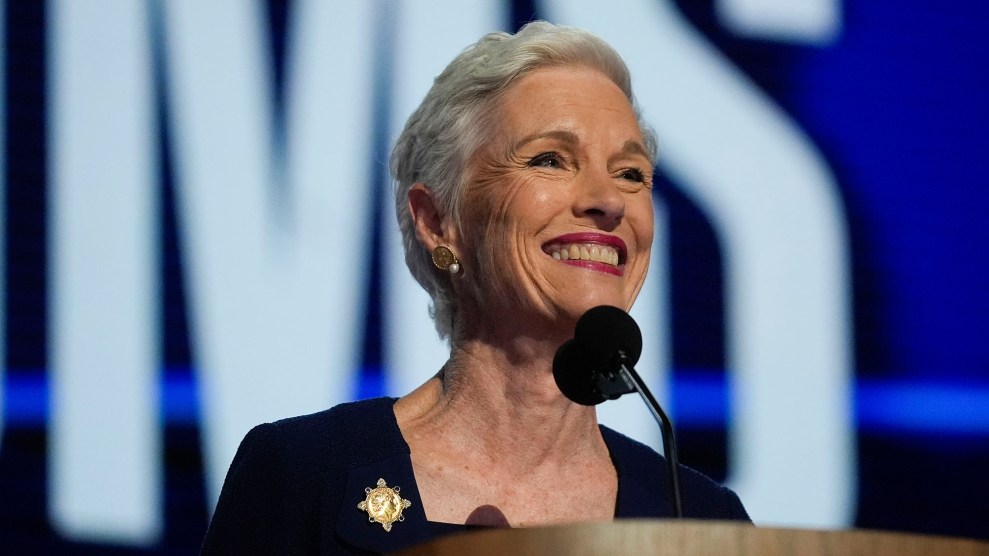
Rep. Kevin McCarthy (R-Calif.) talks to reporters at the Capitol in Washington, Tuesday, Oct. 3, 2023, after Rep. Matt Gaetz filed a motion to oust McCarthy from his leadership role.J. Scott Applewhite/AP
In January, a small faction of right-wing House Republicans relented in their efforts to sink Rep. Kevin McCarthy’s bid to become House speaker. Their support came at a price.
Among several concessions, McCarthy (R-Calif.) agreed to lower the number of Republican members required to initiate the process to oust him from the speakership from five members to one. On Monday night, Rep. Matt Gaetz (R-Fla.) signaled to McCarthy that it was time to pay his bill. The metaphorical invoice came in the form of what the House calls a “motion to vacate” that passed by a narrow majority, 216-210, on Tuesday afternoon. Eight Republicans and all Democrats present voted to remove McCarthy.
The unprecedented events at the Capitol marked the first time in more than 100 years that the House has held a vote on whether to remove a House speaker—and the first time in history that such a vote has led to a speaker actually being removed.
Gaetz—who is being investigated by a House Ethics Committee for possible sexual misconduct, potential campaign finance violations, and more—has been threatening to introduce the resolution to fire McCarthy from his leadership role for months. McCarthy working with Democrats and centrist Republicans to pass a bill temporarily funding the government for 45 days on Saturday was the final nail in the coffin; McCarthy’s hard-right flank had insisted on across-the-board spending cuts and anti-immigration provisions that would never have survived a Democratic majority in the Senate. With time running out, McCarthy chose to sideline his radical colleagues in order to advance a workable bill and avoid a shutdown that would have furloughed more than a million government employees and frozen billions in disaster recovery efforts, among other things.
House Democrats evidently did not think McCarthy’s compromise on the temporary government funding bill was enough for them to help him save his gavel. After all, McCarthy had visited former President Donald Trump at Mar-a-Lago just weeks after Trump encouraged his supporters to march to the Capitol while the 2020 election was being certified. McCarthy would later try to discredit the House committee that investigated the resulting January 6 insurrection, refusing to comply with a subpoena and labeling its work “illegitimate.”
“Given their unwillingness to break from MAGA extremism in an authentic and comprehensive manner,” House Minority Leader Hakeem Jeffries (D-NY) wrote to his caucus ahead of the motion-to-vacate vote, “House Democratic leadership will vote yes on the pending Republican motion to vacate the chair.”
Former House Speaker Nancy Pelosi (D-Calif.) argued that it wasn’t Democrats’ job to intercede on McCarthy’s behalf, regardless of McCarthy’s actions during the spending fight. “The Speaker of the House is chosen by the Majority Party,” she wrote on social media. “In this Congress, it is the responsibility of House Republicans to choose a nominee & elect the Speaker on the Floor. At this time there is no justification for a departure from this tradition.”
In a futile attempt to save McCarthy before the final vote, Rep. Tom Cole (R-Okla.) introduced a motion earlier Tuesday afternoon to table Gaetz’s resolution. That vote failed by a 218-208 margin; all present Democrats and 11 hard-line Republicans voted against that effort save McCarthy’s speakership.
It is not clear who will replace McCarthy as House speaker. It will be difficult, if not impossible, for the House to advance legislation in the interim.
Meanwhile, the House and Senate only have until mid-November to pass a longer-term spending package, when the looming shutdown that McCarthy helped temporarily avoid—ultimately at the cost of his gavel—will appear on the horizon once more.

















